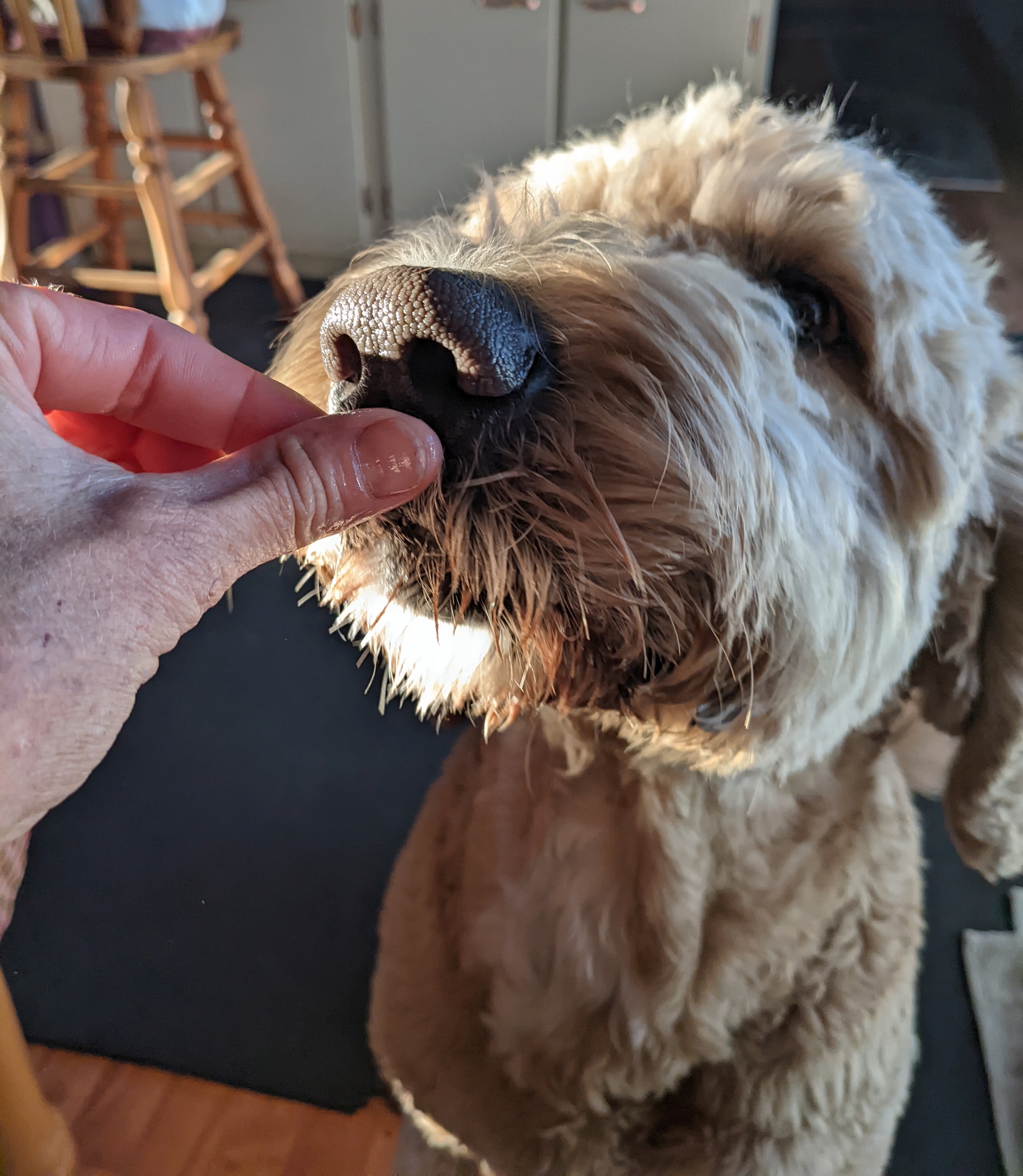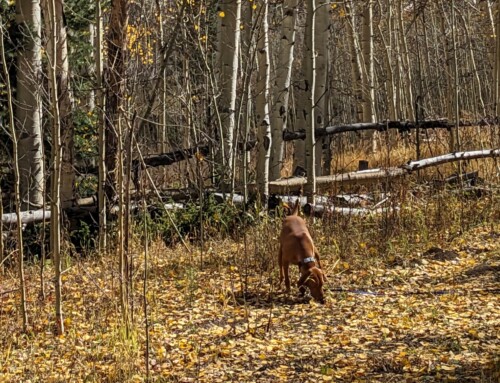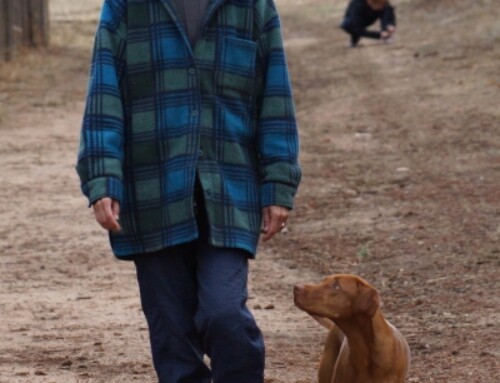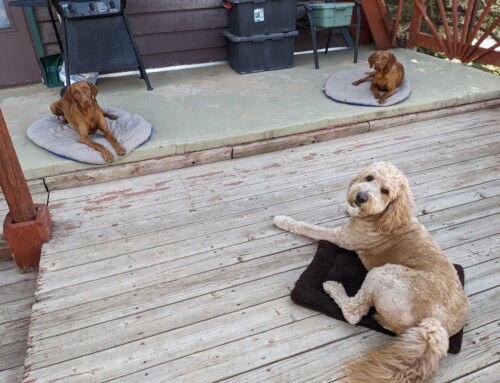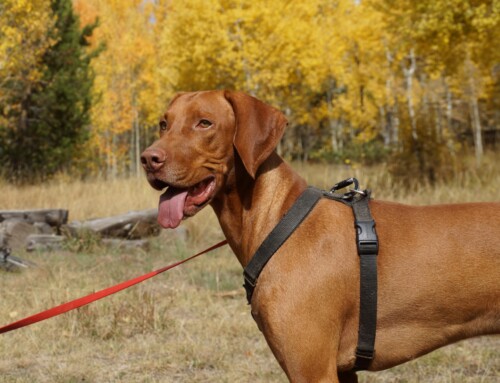DOG TRAINING OFFERED IN-PERSON AND ONLINEOur dog training services are delivered in almost any format that meets your needs. We have GROUP CLASSES at our indoor and outdoor facilities on our farm, ONLINE LIVE STREAMING classes, and SELF-PACED VIDEO-BASED training through our Online Dog Training Course. Our PRIVATE TRAININGS can be done in-home, outside, in public dog-friendly locations, at our facility on our farm, online via phone or video conferencing and through email. |
I like to teach cues that have a variety of uses. When we have versatile cues, we can get a lot more bang for our buck.
One example of a versatile cues is TOUCH.
For me, Touch is a nose target. I am teaching the dog to touch an object with his nose. In this case, the object is your hand. So, when I say Touch, I am asking the dog to move to you, touch his nose to the hand you have presented and then get a reward for it.
Before we get into the details, what do we use Touch for? Why is it so versatile?
Glad you asked!
We can use Touch for:
- another form of recall/come – to touch your hand, they have to come to you
- a way to connect with you and get them tuned in
- a way to redirect them from other distractions you do NOT want them fixating on
- a way to move them away from something
- a way to engage and keep their focus on you
- a way to reduce jumping by having them touch down low before having the chance to jump
- a way to help them learn to start engaging safely with other people (especially for dogs who struggle with stranger danger issues)
- a way to start the concept of using their nose to touch or push other objects
- I taught Romeo to push a basketball across the floor to me with his nose – it was too big to pick up and bring to me, but he could still bring it to me without being able to put it in his mouth.
- You could use this to teach a dog to turn off a light or push a drawer shut, for example.
- what other ideas can you think of?
First, you need to decide what your hand signal will look like. You must have a hand signal for this cue, since your hand is a part of the actual behavior your dog is being asked to perform.
You might use a flat hand, palm toward the dog. However, if you use a flat hand, palm toward the dog, for your Stay cue, then do NOT use it for your Touch cue!
I use a fist. I hold out the curled up portion closest to my index finger and thumb toward the dog.
Some people curl in all fingers except the index and middle fingers, and use the two fingers held out as their Touch cue.
Some people will use a flat hand but with the back of their hand toward the dog.
You can use whatever you want, as long as it is not so close to another hand signal you use that you will confuse your dog.
Touch means the dog's NOSE touches your hand. Not the dog's mouth. Not the paw. Just the nose.
There is NO TREAT in your Touch hand. Let me repeat that. There is NO TREAT in your Touch hand.
When you hold out your hand, within a few inches of your dog's nose to start, your dog will probably reach in to investigate. Does the human have a treat in that hand?! As soon as you feel the nose touch your hand, you mark (click your clicker or use your verbal marker) and reward from the other hand or from your bait bag or from the treats sitting somewhere nearby.
Repeat. And repeat.
You do not touch the dog's nose with your hand. The dog must reach to touch your hand. But they should not need to reach too far at first.
As they get the hang of it, you will move farther away. And change up the location of your hand, the distance, the height, etc.
If your dog does not reach to touch your hand within a few seconds, remove your hand. Then reset and hold it out again.
If the dog does not reach for your hand pretty quickly, do not leave your hand sitting out there hanging. It's sort of like reaching out to shake someone's hand and they do not reciprocate. Don't leave yourself hanging out there!
Once your dog is getting the hang of it over a few sessions, you can add in your verbal Touch cue. Say it just before you hold out your hand or as you are holding out your hand but before they touch with their nose.
What other cues do you use that are as versatile as Touch?
Our goal is to positively impact the lives of as many dogs and their families as we can, in part through our extensive library of video, infographics and text articles. 
|

